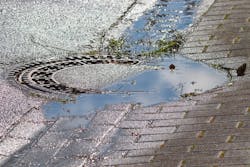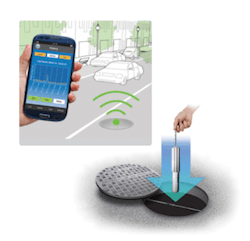Inflow & Infiltration Data Spares Alabama Utility
About the author:
Robert Donnelly is vice president of marketing for Eastech Corporation. Donnelly can be reached at [email protected].
In conjunction with a Hazen & Sawyer Engineering Team, the area selected for the Jefferson County, Alabama, Inflow and Infiltration Pilot Project was Turkey Creek, which was one of the basins identified as responsible for contributing to the greatest amount of their I&I problems.
After evaluations, the county decided to place 14) iTracker sensors within the 22 linear miles comprising the Turkey Creek 2B basin. The project was scheduled for completion in three phases during what was to be a six-month pilot project.
The project was completed in just over three months with actual man hours expended on all three phases totaling just 48 hours, which also included generating the analytical reports.
Phase 1: Installation of Sensors
The project began at the beginning of February by installing all 14 iTracker sensors at strategic locations along the 22 mile Turkey Creek 2B basin. On average, it took 20 to 30 minutes to locate each manhole and only 15 minutes install each sensor. Each sensor weighs just under 2 lbs and can be installed without confined space entry. The entire installation process was completed in less than 10 hours.
Phase 2: Data Collection & Analysis
The next phase consisted of data collection from the strategically placed sensors. On March 16, about five weeks after installation and after a few rain events, data was simply and safely collected from each monitored site using smartphone Wi-Fi connectivity. The collected data was imported into the analytical software program to determine the basins responsible for contributing to the greatest amounts of I&I.
With the click of a button, bar graphs were automatically generated detailing rain-derived inflow and infiltration (RDII), groundwater, base, and total I&I for each monitored site. It was quickly determined that Mini-Basin 7004-002 was responsible for the highest volumes of RDII.
In order to further isolate the source of I&I entering the system, 11 sensors were strategically relocated and placed upstream of Site 7004-002. It was quickly determined that an area directly upstream of 7004-002 consisting of only four manholes alongside a creek were responsible for contributing the majority of RDII.
Evidence of major infiltration was also discovered along the 7004-002 15 inch ID micro-basin with the majority entering between two adjacent manholes (002 and 003). Cameras were immediately dispatched and determined that the large volumes of I&I were due to faulty laterals entering the 7004-002 micro-basin between manholes 002 and 003.
Conclusion
After just 48 hours of field and analytical time expended, iTrackers that were strategically located were able to quickly and cost-effectively evaluate 22 miles of the Jefferson County collection system piping all the way down to 14 mini and micro-basins in just a 3.5 month period and identified for Hazen & Sawyer the major locations of the I&I problems that the municipality had been searching for unsuccessfully for years.
Watch a video about this inflow and infiltration detection technology on Youtube.

